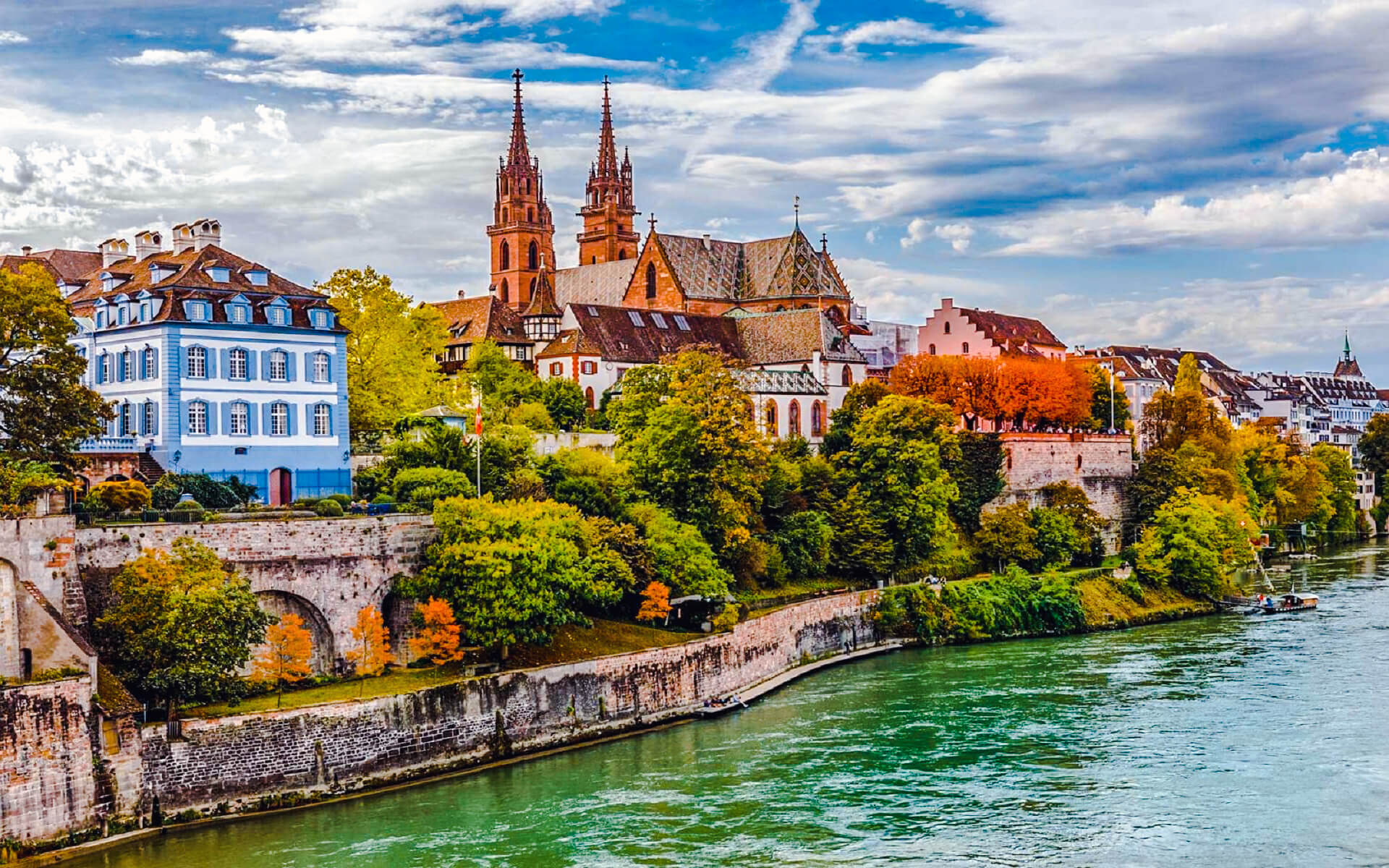Basel is a city on the Rhine in northern Switzerland. The Basel area, located at the crossroads of Switzerland, Germany, and France, culturally stretches into German Baden-Württemberg and French Alsace. Since the 11th century, Basel has been the seat of a Prince-Bishopric, and it joined the Swiss Confederacy in 1501. Basel had been a commercial hub since the Renaissance, and in the twentieth century it evolved as a center for the chemical and pharmaceutical industries.
With a population of over 195,000 people, Basel is Switzerland’s third-most populated city (after Zürich and Geneva). Basel is located at the crossroads of the Swiss, French, and German borders, and it has suburbs in both France and Germany. With a population of 537,100 across 74 municipalities in Switzerland and an additional 53 in neighboring countries in 2014, the Basel agglomeration was the third biggest in Switzerland (municipal count as of 2000). The tri-national Basel metropolitan region is home to around 830,000 people spread over 226 municipalities.
The official language of Basel is (the Swiss variation of Standard) German, while the major spoken language is an Alemannic Swiss German dialect.
Basel German belongs to the Low Alemannic group, which connects it more closely to Alsatian and Swabian dialects than to the other varieties of Swiss German. Since the Renaissance and the Age of Enlightenment, Basel has been an important cultural center. It is home to the Swiss Confederation’s oldest university (1460).


